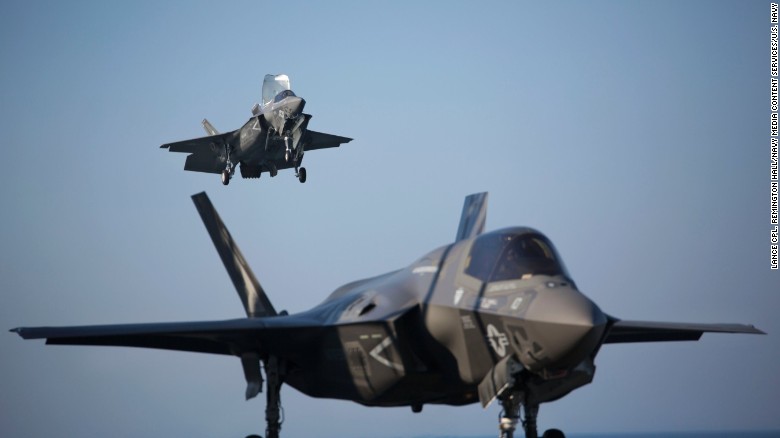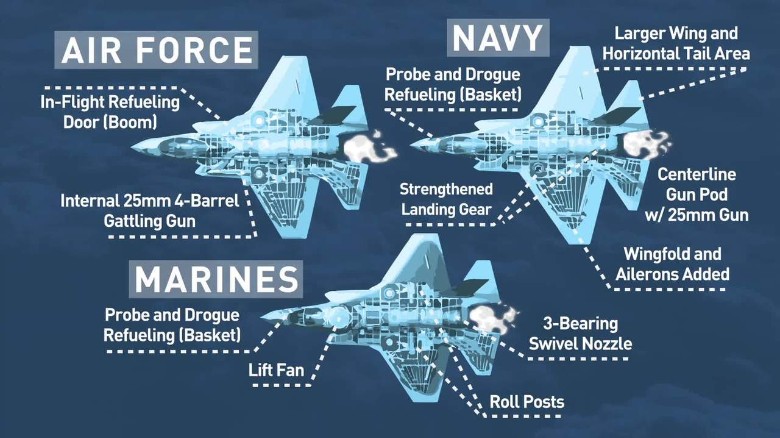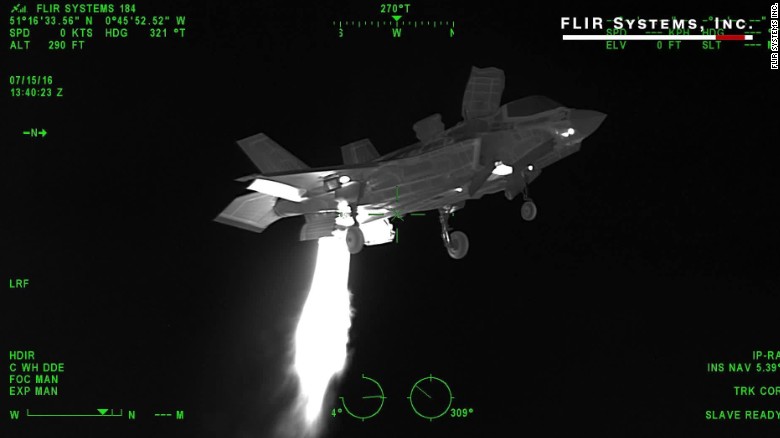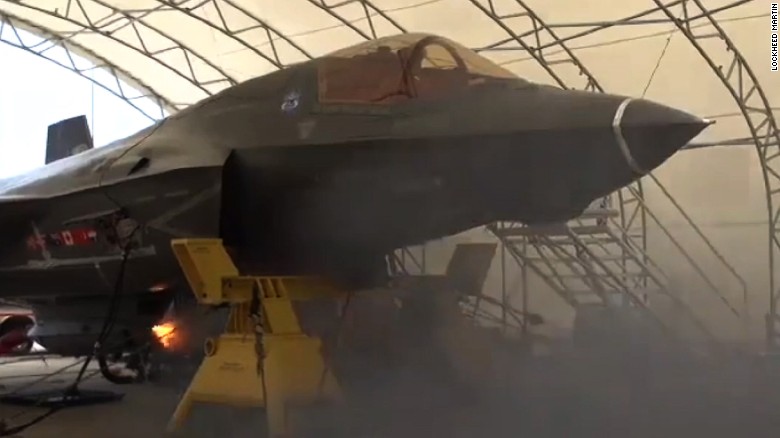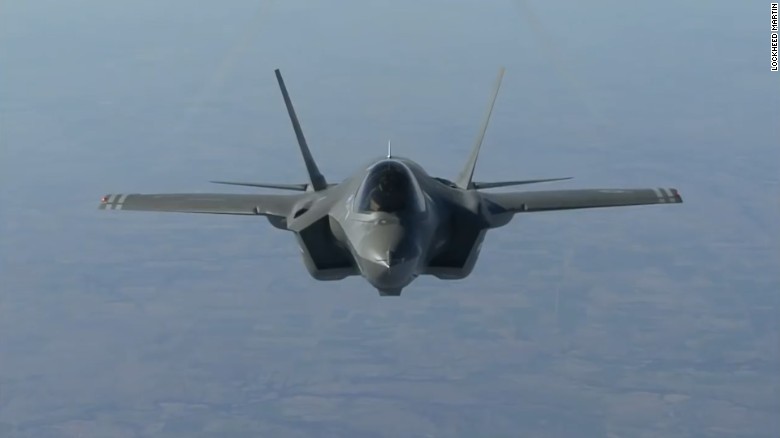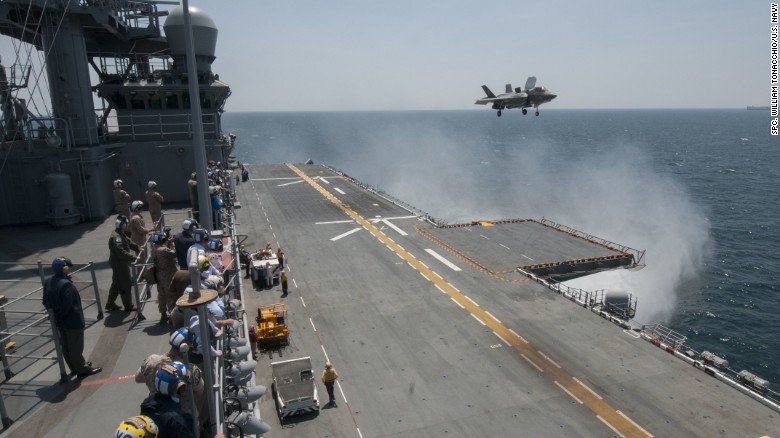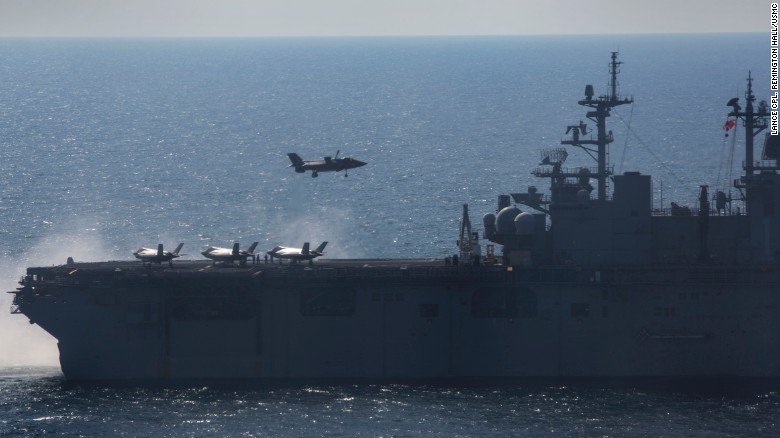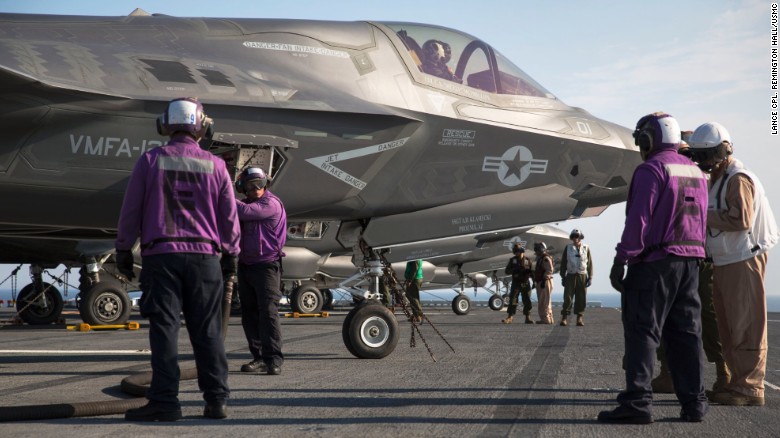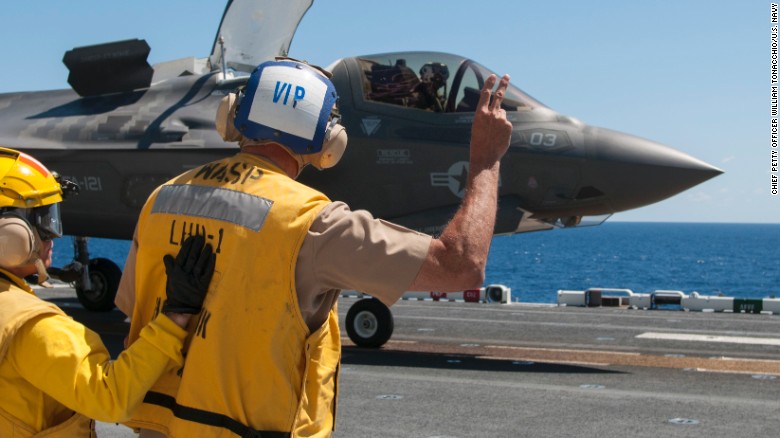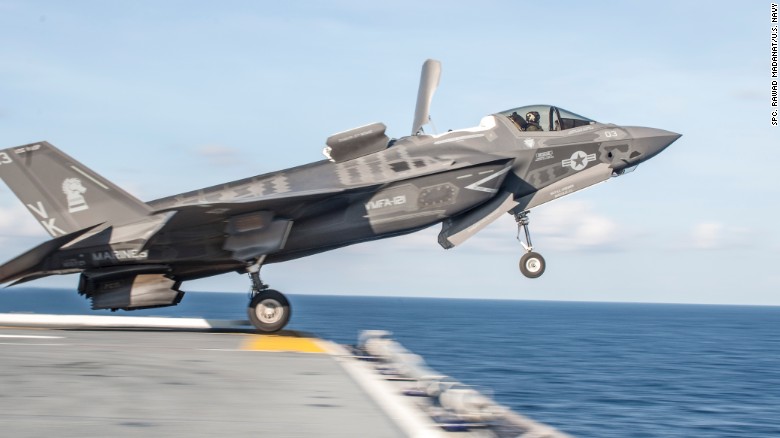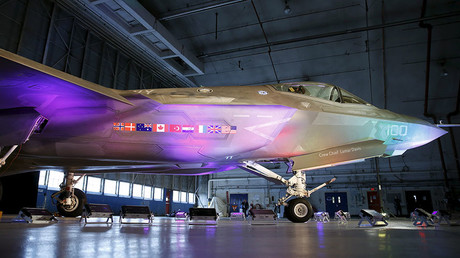F-22Raptor
ELITE MEMBER

- Joined
- Jun 19, 2014
- Messages
- 16,980
- Reaction score
- 3
- Country
- Location
The F-35 Joint Strike Fighter, the most expensive and one of the most controversial weapons systems in US history, is on its way to Japan to be "the cornerstone" of US defense in the Pacific.
Ten US Marine Corps F-35Bs left Arizona Monday on the first overseas deployment for the stealth jets.
The planes are heading for Marine Corps Air Station Iwakuni, not far from Hiroshima, on the Japanese main island of Honshu.
Sending the $104 million jets to Iwakuni shows Washington's "commitment to the defense of Japan with the most capable and modern equipment in the U.S. inventory," 1st Lt. Karoline Foote of the III Marine Expeditionary Force in Japan told CNN in an email.
"It will be the cornerstone of a multi-mission joint force possessing improved mission flexibility and unprecedented effectiveness to engage and destroy both air and ground threats," Foote said.
The initial deployment includes 10 aircraft with the possibility of six more joining later, according to a report from US Naval Institute news.
The Marines are touting the F-35B's versatility, calling it "a true force multiplier."
"The unique combination of stealth, cutting-edge radar and sensor technology, and electronic warfare systems bring all of the access and lethality capabilities of a fifth-generation fighter, a modern bomber, and an adverse-weather, all-threat environment air support platform," a Marine statement said.
The single-engine F-35 comes in three variants. The A version is flown by the US Air Force, the B version by the Marines, and the C version will become part of the US Navy's fleet.
The F-35 is also being sold to and produced by US allies around the world, including Japan, which received its first unit in December.
The Marines' F-35B differs from the other versions in that it is capable of vertical take-offs and landings so it can operate from amphibious assault ships, essentially small aircraft carriers. It replaces the AV-8B Harrier, which has been around since the late 1970s.
The Marines said the deployment to Japan is part of the Obama administration's pivot to Asia and not related to any current specific situation.
A statement to allies and foes
But analysts say the presence of the sophisticated jets in Japan still represents a statement to current and potential adversaries in the region.
"Operationally, the F-35B has great potential and moving it to Japan does send a signal to North Korea, which has been making a lot of threats lately and of course, China," Carl Schuster, a Hawaii Pacific University professor and former director of operations at the US Pacific Command's Joint Intelligence Center, said in an email to CNN.
"There is ... a strategically symbolic facet -- rather than Europe, the Middle East or Australia, it is Asia and Japan that receives the first overseas deployment of the F-35," Corey Wallace, Japan security analyst at Freie University in Berlin, said in an email to CNN. "This signals the priority that the US government and its armed forces place on the alliance at this particular time."
"While the security environment surrounding Japan becomes increasingly severe, the deployment of the most modern and capable equipment to Japan strengthens the deterrence of the Japan-U.S. alliance and contributes to the stability of Asia Pacific region," Japan's Ministry of Defense said.
Tensions between Japan and China have spiked over the past year as the Pacific powers wrangle over control over the Senkaku Islands, which China calls the Diaoyus, in the East China Sea.
In October, Japan said it had dispatched its warplanes 407 times between April 1 and September 30 in reaction to increased Chinese military flights near Japanese airspace.
That's almost double the number of intercepts Japan's Air Self Defense Force made on Chinese aircraft in the same period in 2015. The intercepts have continued into 2017, the most recent being this week.
US defense officials say the F-35 has the upper hand over top Chinese stealth fighters such as the J-20, which Beijing showed off to the public for the first time in November.
"When I hear about F-35 versus J-20, it's almost an irrelevant comparison," US Air Force Chief of Staff Gen. David Goldfein said in August, according to a report from BreakingDefense.com.
The US general said the US F-35 integrates with other US weapons and systems to give it the technological advantage.
Fighting a budget battle
While the F-35Bs come into a tense situation in the region, the cost of the aircraft has also generated strong headwinds of criticism, including from President-elect Donald Trump.
The $400 billion price tag for the 2,443 planes in the US part of the program is double the original budget.
"It's way, way behind schedule and many, many billions of dollars over budget. I don't like that," Trump said in a press conference Wednesday. Trump promised competition for the program to drive down costs.
Sen. John McCain, the Arizona Republican who is chairman of the Senate Armed Services Committee, said in April that repeated problems with the F-35 were "both a scandal and a tragedy."
But on Thursday, Trump's nominee for Secretary of Defense, former Gen. James Mattis, called the F-35 "critical" for US air superiority and for its ability to integrate with allies who are buying the jet.
Many US allies have "bet their air superiority on the F-35 program. It bonds us tightly together with them," Mattis said.
Japan is one of those. In fact, the plane's manufacturer delivered the Japan Air Self-Defense Force its second F-35 on Wednesday. That jet was the 200th delivered from Lockheed Martin's Fort Worth, Texas, production facility.
Wallace, the Freie University analyst, said with that commonality between US and Japanese forces, the Japan assignment makes a lot of sense.
"Since the F-35 will be increasingly integrated into Japan's defense force operations, and one of the key features of the F-35's suite of technologies is its enhanced interoperability with other platforms and across air forces, it's no surprise from an operational and tactical point of view to see F-35s being deployed to Japan at this time," he said.
One of those platforms the F-35 will work with is the Navy's E-2D Advanced Hawkeye airborne early warning and control aircraft.
The Navy said last week that Advance Hawkeyes, with radar than can detect adversaries' stealth aircraft, will be heading to Iwakuni in February.
http://edition.cnn.com/2017/01/12/politics/marines-f-35-stealth-jets-deploy-to-japan/
Ten US Marine Corps F-35Bs left Arizona Monday on the first overseas deployment for the stealth jets.
The planes are heading for Marine Corps Air Station Iwakuni, not far from Hiroshima, on the Japanese main island of Honshu.
Sending the $104 million jets to Iwakuni shows Washington's "commitment to the defense of Japan with the most capable and modern equipment in the U.S. inventory," 1st Lt. Karoline Foote of the III Marine Expeditionary Force in Japan told CNN in an email.
"It will be the cornerstone of a multi-mission joint force possessing improved mission flexibility and unprecedented effectiveness to engage and destroy both air and ground threats," Foote said.
The initial deployment includes 10 aircraft with the possibility of six more joining later, according to a report from US Naval Institute news.
The Marines are touting the F-35B's versatility, calling it "a true force multiplier."
"The unique combination of stealth, cutting-edge radar and sensor technology, and electronic warfare systems bring all of the access and lethality capabilities of a fifth-generation fighter, a modern bomber, and an adverse-weather, all-threat environment air support platform," a Marine statement said.
The single-engine F-35 comes in three variants. The A version is flown by the US Air Force, the B version by the Marines, and the C version will become part of the US Navy's fleet.
The F-35 is also being sold to and produced by US allies around the world, including Japan, which received its first unit in December.
The Marines' F-35B differs from the other versions in that it is capable of vertical take-offs and landings so it can operate from amphibious assault ships, essentially small aircraft carriers. It replaces the AV-8B Harrier, which has been around since the late 1970s.
The Marines said the deployment to Japan is part of the Obama administration's pivot to Asia and not related to any current specific situation.
A statement to allies and foes
But analysts say the presence of the sophisticated jets in Japan still represents a statement to current and potential adversaries in the region.
"Operationally, the F-35B has great potential and moving it to Japan does send a signal to North Korea, which has been making a lot of threats lately and of course, China," Carl Schuster, a Hawaii Pacific University professor and former director of operations at the US Pacific Command's Joint Intelligence Center, said in an email to CNN.
"There is ... a strategically symbolic facet -- rather than Europe, the Middle East or Australia, it is Asia and Japan that receives the first overseas deployment of the F-35," Corey Wallace, Japan security analyst at Freie University in Berlin, said in an email to CNN. "This signals the priority that the US government and its armed forces place on the alliance at this particular time."
"While the security environment surrounding Japan becomes increasingly severe, the deployment of the most modern and capable equipment to Japan strengthens the deterrence of the Japan-U.S. alliance and contributes to the stability of Asia Pacific region," Japan's Ministry of Defense said.
Tensions between Japan and China have spiked over the past year as the Pacific powers wrangle over control over the Senkaku Islands, which China calls the Diaoyus, in the East China Sea.
In October, Japan said it had dispatched its warplanes 407 times between April 1 and September 30 in reaction to increased Chinese military flights near Japanese airspace.
That's almost double the number of intercepts Japan's Air Self Defense Force made on Chinese aircraft in the same period in 2015. The intercepts have continued into 2017, the most recent being this week.
US defense officials say the F-35 has the upper hand over top Chinese stealth fighters such as the J-20, which Beijing showed off to the public for the first time in November.
"When I hear about F-35 versus J-20, it's almost an irrelevant comparison," US Air Force Chief of Staff Gen. David Goldfein said in August, according to a report from BreakingDefense.com.
The US general said the US F-35 integrates with other US weapons and systems to give it the technological advantage.
Fighting a budget battle
While the F-35Bs come into a tense situation in the region, the cost of the aircraft has also generated strong headwinds of criticism, including from President-elect Donald Trump.
The $400 billion price tag for the 2,443 planes in the US part of the program is double the original budget.
"It's way, way behind schedule and many, many billions of dollars over budget. I don't like that," Trump said in a press conference Wednesday. Trump promised competition for the program to drive down costs.
Sen. John McCain, the Arizona Republican who is chairman of the Senate Armed Services Committee, said in April that repeated problems with the F-35 were "both a scandal and a tragedy."
But on Thursday, Trump's nominee for Secretary of Defense, former Gen. James Mattis, called the F-35 "critical" for US air superiority and for its ability to integrate with allies who are buying the jet.
Many US allies have "bet their air superiority on the F-35 program. It bonds us tightly together with them," Mattis said.
Japan is one of those. In fact, the plane's manufacturer delivered the Japan Air Self-Defense Force its second F-35 on Wednesday. That jet was the 200th delivered from Lockheed Martin's Fort Worth, Texas, production facility.
Wallace, the Freie University analyst, said with that commonality between US and Japanese forces, the Japan assignment makes a lot of sense.
"Since the F-35 will be increasingly integrated into Japan's defense force operations, and one of the key features of the F-35's suite of technologies is its enhanced interoperability with other platforms and across air forces, it's no surprise from an operational and tactical point of view to see F-35s being deployed to Japan at this time," he said.
One of those platforms the F-35 will work with is the Navy's E-2D Advanced Hawkeye airborne early warning and control aircraft.
The Navy said last week that Advance Hawkeyes, with radar than can detect adversaries' stealth aircraft, will be heading to Iwakuni in February.
http://edition.cnn.com/2017/01/12/politics/marines-f-35-stealth-jets-deploy-to-japan/






